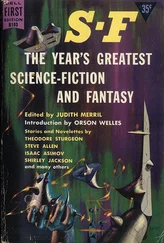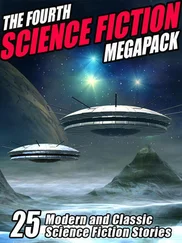Thanks for visiting Enceladus with me! I hope you had a pleasurable ride. If you’d like to see all these places in their colorful glory, you can get the PDF version of the New Biography of Enceladus for free by leaving me your e-mail address at: hard-sf.com/subscribe

Glossary of Acronyms
AI – Artificial Intelligence
API – Application Program Interface; Acoustic Properties Instrument
ASCAN – AStronaut CANdidate
AU – Astronomical Unit (the distance from the Earth to the sun)
BIOS – Basic Input/Output System
C&DH – Command & Data Handling
CapCom – Capsule Communicator
Cas – CRISPR-associated system
CELSS – Closed Ecological Life Support System
CIA – (U.S.) Central Intelligence Agency
COAS – Crewman Optical Alignment Site
Comms – Communiques
CRISPR – Clustered Regularly Interspaced Short Palindromic Repeats
DEC PDP-11 – Digital Equipment Corporation Programmable Data Processor-11
DFD – Direct Fusion Drive
DISR – Descent Imager / Spectral Radiometer
DNA – DeoxriboNeucleic Acid
DoD – (U.S.) Department of Defense
DPS – Data Processing Systems specialist (known as Dipsy)
DSN – Deep Space Network
ECDA – Enhanced Cosmic Dust Analyzer
EECOM – Electrical, Environmental, COnsumables, and Mechanical
EGIL – Electrical, General Instrumentation, and Lighting
EJSM – Europa Jupiter System Mission
ELF – Enceladus Life Finder
EMU – Extravehicular Mobility Unit
ESA – European Space Agency
EVA – ExtraVehicular Activity
F1 – Function 1 (Help function on computer keyboards)
FAST – (Chinese) Five-hundred-meter Aperture Spherical Telescope
FAO – Flight Activities Office
FCR – Flight Control Room
FD – Flight Director
FIDO – FlIght Dynamics Officer
Fortran – FORmula TRANslation
g – g-force (gravitational force)
GBI – Green Bank Interferometer
GNC – Guidance, Navigation, and Control system
HAI – High-Altitude Indoctrination device
HASI – Huygens Atmospheric Structure Instrument
HP – HorsePower
HUT – Hard Upper Torso
IAU – International Astronomical Union
ILSE – International Life Search Expedition
INCO – INstrumentation and Communication Officer
IR – InfraRed
ISS-NG – International Space Station-Next Generation
IT – Information Technology
IVO – Io Volcano Explorer
JAXA – Japan Aerospace eXploration Agency
JET – Journey to Enceladus and Titan
JPL – Jet Propulsion Laboratory
JSC – Johnson Space Center
JUICE – JUpiter ICy moons Explorer
LCD – Liquid Crystal Display
LCVG – Liquid Cooling and Ventilation Garment
LEA – Launch, Entry, Abort spacesuit
LIFE – Life Investigation For Enceladus
LTA – Lower Torso Assembly
MAG – Maximum Absorbency Garment
MCC – Mission Control Center
MIT – Massachusetts Institute of Technology
MOM – Mission Operations Manager
MPa – MegaPascal
MPD – MagnetoPlasmadynamic Drive
MSDD – Multi-station Spatial Disorientation Device
NSA – National Security Agency
NASA – National Aeronautics and Space Administration
NEA – Near Earth Asteroids
PAO – Public Affairs Office
PC – Personal Computer
PE-UHMW – PolyEthylene-Ultra High Molecular Weight
PER – fluid PERmittivity sensor
PI – Principal Investigator
Prop – Propulsion
PSS – Princeton Satellite Systems
RCS – Reaction Control System
REF – REFractive index sensor
RNA – RiboNeucleic Acid
RTG – Radioisotope Thermoelectric Generator
SAFER – Simplified Aid For EVA Rescue
SIRI – Speech Interpretation and Recognition Interface
SFTP – SSH (Secure Socket sHell) File Transfer Protocol
SSP – Surface Science Package
SSR – Solid-State Recorder
TandEM – Titan and Enceladus Mission
TiME – TItan Mare Explorer
TNO – Trans-Neptunian Object
TSSM – Titan Saturn System Mission
UTC –Universal Time Coordinated
Valkyrie – Very deep Autonomous Laser-powered Kilowatt-class Yo-yoing Robotic Ice Explorer
VASIMR – VAriable Specific Impulse Magnetoplasma Rocket
VR – Virtual Reality
WHC – Waste Hygiene Compartment

Metric to English Conversions
Author’s note: It is assumed that by the time the events of this novel take place, the United States will have joined the rest of the world and will be using the International System of Units, the modern form of the metric system.
Length:
centimeter = 0.39 inches
meter = 1.09 yards, or 3.28 feet
kilometer = 1093.61 yards, or 0.62 miles
Area:
square centimeter = 0.16 square inches
square meter = 1.20 square yards
square kilometer = 0.39 square miles
Weight:
gram = 0.04 ounces
kilogram = 35.27 ounces, or 2.20 pounds
Volume:
liter = 1.06 quarts, or 0.26 gallons
cubic meter = 35.31 cubic feet, or 1.31 cubic yards
Temperature:
To convert Celsius to Fahrenheit, multiply by 1.8 and then add 32
Excerpt: The Titan Probe


January 14, 2005, Titan
Huygens awoke at 04:41 a.m. All three preprogrammed timers punctually activated the probe named after the Dutch astronomer Christiaan Huygens. Its main computer ran the test program. The sensors were in working order. Now the scientific instruments were triggered, step by step. First diagnosis—it was in free fall. Everything was going according to plan.
Twenty days ago, a spring mechanism had separated it from the Cassini probe, its ride that had brought it to the ringed planet Saturn over the course of seven years—almost two billion kilometers, though Huygens had noticed little about this long journey. Data packages had been sent from Earth on 16 occasions to run health checks.
Huygens was racing toward Titan at 17 times the speed of sound. No piece of technology made by humans had yet landed on this moon, which resembled the moon of Earth like no other object in the solar system, yet was also so very different from it. The control software of Huygens was prepared for all kinds of surprises, because its programmers did not know much about Titan when the probe was launched.
The countdown continued. The probe was still in freefall toward its destination, which was located somewhere south of the equator. Four hours had gone by when the sensors reported the first particles of the atmosphere hitting its heat shield. The air rapidly became denser. Friction heated the cone-shaped heat shield at its bottom, and at the same time it decelerated the probe, within four minutes, to just above the speed of sound on earth. The pressure sensors transmitted a signal to the main computer. A charge was triggered, and the controlled explosion released the main parachute. At first, Huygens fell blindly, but 30 seconds later the probe moved slowly enough to blast off the no-longer-needed heat shield. Now the instruments started their work, until a warning message reached the computer—one of the radio modules had failed because a person on Earth had forgotten to send the activation command. There was no time for calling back. On Earth, it would be several hours before anyone noticed what had happened. The automatic system decided to continue its mission.
Читать дальше














